Table of Contents[Hide][Show]
Did you ever hear the myth about the moon being made of cheese? Folks in medieval times may have actually thought this story was true.
Nowadays, we know better than to believe this silly wives’ tale, but that doesn’t mean our fascination with cheese has faded with time. We love it just as much as ever!
So, do people with type 2 diabetes get to join in on the fun and enjoy cheese, too?
Read on to learn the facts.
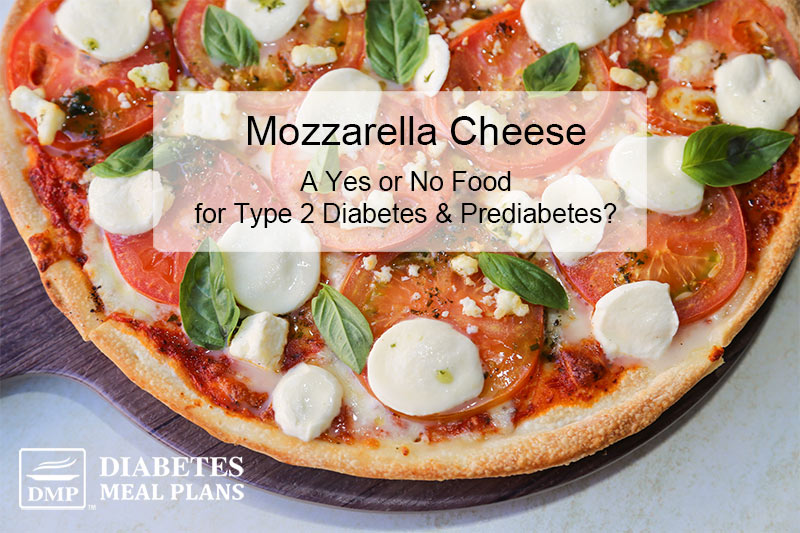
Mozzarella Nutrition Facts
Like all cheeses, mozzarella is made from a combination of cow’s milk, bacteria cultures, and activating enzymes. The “curdling” process transforms liquid milk into a stretchy, sweet-but-tangy cheese that melts like a dream and adds delicious flavor to just about any meal.
Mozzarella is a white, semi-sweet cheese that shines in savory dishes from the classic Margherita pizza to baked lasagna, spicy enchiladas, and beyond!
Unlike sharp cheddar cheese, mozzarella it’s super versatile due to its mild flavor.
Mozzarella also contains vitamins and minerals like calcium, phosphorus, selenium, zinc, and vitamin B-12.
As far as macronutrients go, here’s what you’ll get in a 2 oz (58g) serving of shredded mozzarella cheese:
- Calories: 160
- Carbohydrate: 4g
- Protein: 12g
- Fat: 10g
- Fiber: 0g
Cheese is a great source of both fat and protein, plus it’s lower in carbs than other dairy products.
During the curdling process, bacteria cultures break down most of the natural sugar in the milk (lactose), producing a cheese that is less sweet tasting but lower in carbs than standard cow’s milk.
Mozzarella Vs. Other Cheeses
How does mozzarella compare to other cheeses in terms of protein, fat, and carbs? Is one cheese healthier than the other?
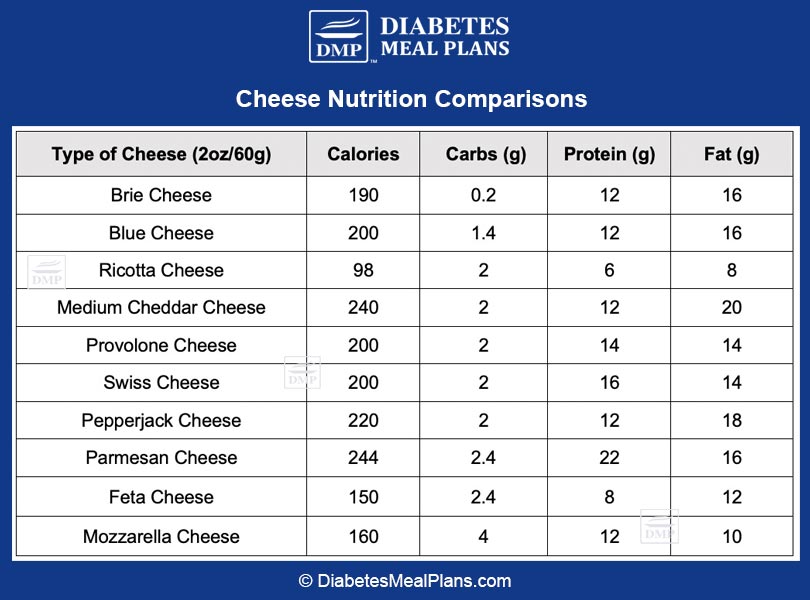
With the exception of parmesan, most people with diabetes don’t need to worry about limiting their cheese intake too much.
Unlike straight milk or yogurt, it’s difficult to go overboard with carbs when most cheeses contain just 2-4g of carbs per serving.
Parmesan tops out the list at 7g of carbs, but that’s for a rather large serving (½ cup) of grated cheese. This serving size is usually reserved for whole casseroles or other large quantities that may be split into multiple servings.
Mozzarella also falls towards the “carb-ier” end of the spectrum, but there isn’t too much to worry about unless you’re heaping piles of cheese onto every soup, salad, and steak dinner.
Pretty much all cheeses are free game for people with type 2 diabetes and prediabetes.
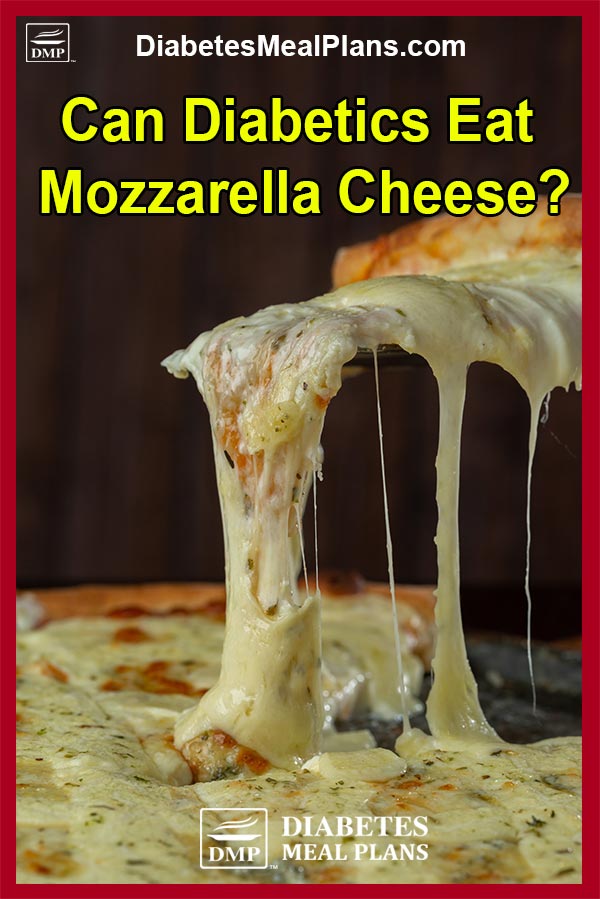
Recommendation for Mozzarella & Diabetes
Full-fat dairy products like cheese are a great way to add great flavor and color to your carb-controlled diet.
Not only does cheese taste amazing, but its high fat content helps to create stable energy throughout the day. Fat and protein-rich meals supply a steady stream of energy as they digest slowly and increase blood sugar levels gradually.
We suggest incorporating mozzarella cheese into your diet wherever and however you’d like (within reason).
Mozzarella can be used interchangeably with a lot of other cheeses in many recipes, so if a recipe calls for cheddar cheese and all you’ve got is the white stuff, it’s an easy swap.
Mozzarella Recipes & Ideas
Here are some ideas for using mozzarella in the kitchen:
Casseroles & Bakes
Semi-soft cheeses like mozzarella melt like a dream, making them the perfect addition to dishes like a low carb Chicken Tray Bake Pizza, a Vegetable Bake, and a creamy Green Bean Casserole.
Tasty Tacos
Mexican-inspired meals like our Taco Tomatoes and Chicken Fajitas are the perfect place to layer on a handful of extra cheese.
Low Carb Pizza
We all know that when it comes to pizza, cheese is the star of the show.
You can load up these low-carb pizzas with cheese and enjoy every bite without worrying about carbs.
Sides & Salads
Sprinkle cheese on salads of all kinds: egg salad, tuna salad, Caesar salad, chef salad, etc.
You name it, it’s better with a bit of cheese on top.
For a fresh take on salads, try this Cheesy Egg & Cucumber Salad recipe.
Savory Breakfast
Egg-based breakfast favorites like egg muffins, breakfast scrambles, and omelets can all be taken to the next level with a helping hand from cheese.
Easy Snacks
The classic string cheese is made of mozzarella.
Try pairing a cheese stick with a handful of olives, some carrot sticks, or a serving of other veggies for a healthy fat and fiber-rich snack.
Mozzarella Q&A
Is fresh mozzarella ok for diabetics?
Yes, it sure is ok! Fresh mozzarella is high in protein (about 8g per 1 oz/28 g) and low in carbs (about 0.9g per 1 oz/28 g), making it a perfect friend for stable blood sugar levels.
Can diabetics eat mozzarella sticks?
Yes, diabetics can safely eat mozzarella sticks and string cheese. These make a great satisfying and easy snack.
Benefits of mozzarella cheese for diabetics?
In terms of nutrition, mozarella provides many health benefits to diabetics – it’s low in carbs, high in protein, contains a healthy dose of fat – this combination is good for blood sugar control. In addition, mozarella offers calcium, cobalamin and a small amount of magnesium.
Feel free to include mozarella in your menu!
**Download our food list below to learn more about the best foods to eat!

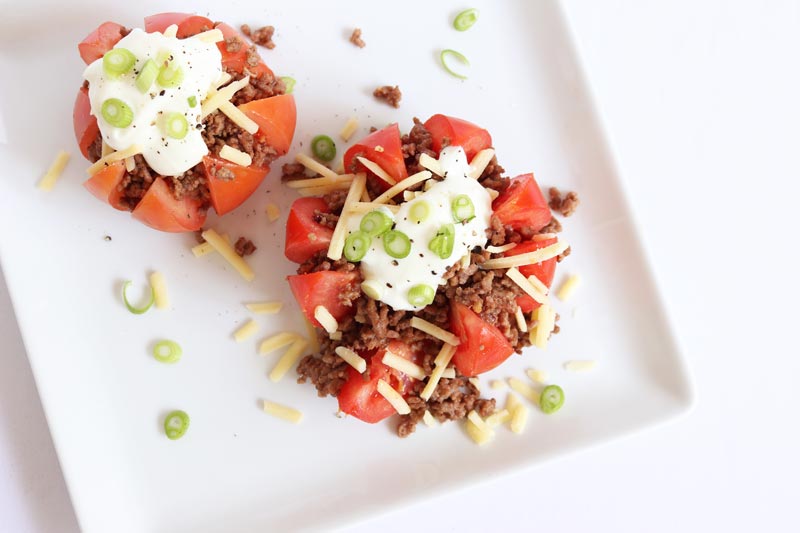
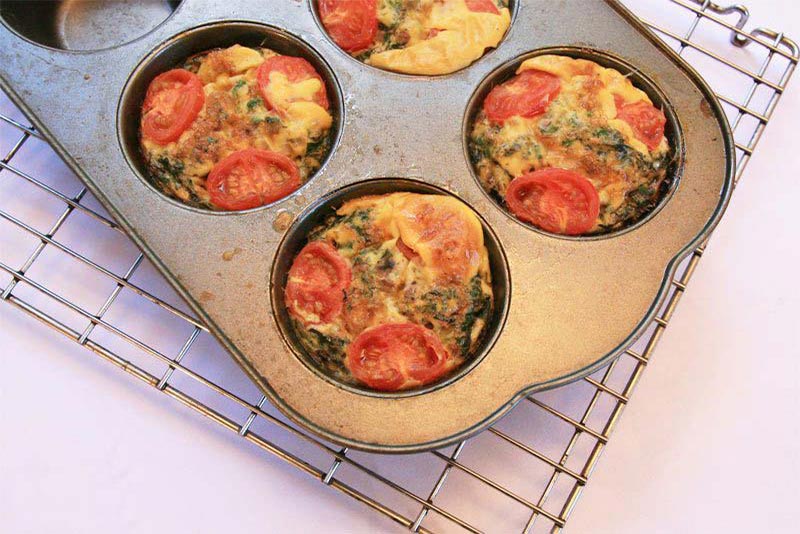
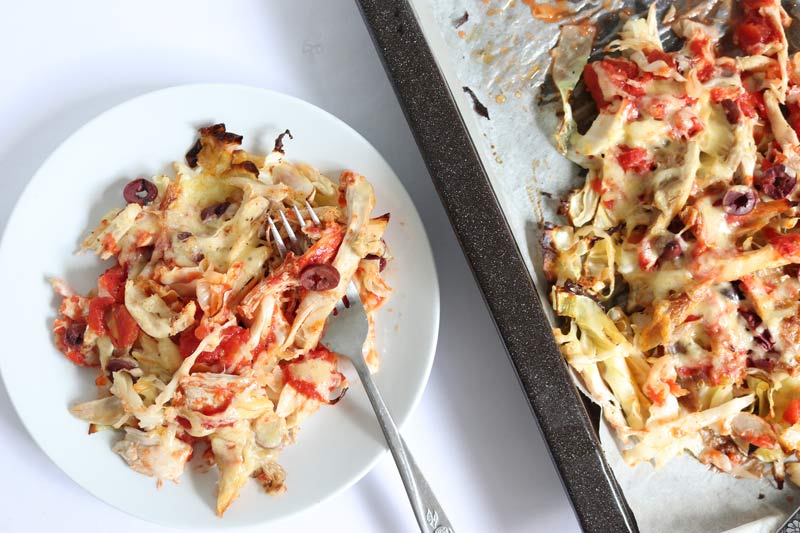
Leave a Reply